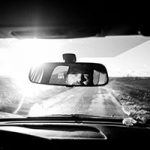Portrait Passion
Portrait photography has always been one of the most popular styles of photography. Ever since it was invented, photography technology has been used most widely for portraits: before, only extremely wealthy people could commission their portrait to an artist. Photography and portraiture opened the way to a more detailed culture of our personal image that in the following years spread among all the social classes.
Creating a portrait does not only mean taking a photograph of a person or someone in front of us. As in the past, the painter artist was expected to give his own interpretation of the subject, now the portrait photographer is expected to give his own creative and personal contribution to the artwork.


Paradoxically, I think portrait is more a psychological and social discipline than a strictly technical one. When you take a photograph, you need to gain a knowledge about the subject you are dealing with: in this case, the subject of a portrait is people.
When I hold my portrait photography classes, most participants are surprised to come to know how important the role of communication between the photographer and the depicted subject is important. Of course, this does not mean the camera, the lenses and all the other needed equipment are not important, but they are just a part of the equation, which solve the ratio between the subject and the photographer, and it must solve it well and quickly.
The Olympus system offers many advantages in this endeavor. When people ask me how I create my portraits, I always notice a certain astonishment in their eyes: “What?! You didn’t use a full-frame camera?!”


“Big is better” is not always a true statement. In order to create a good portrait, I noticed I always need an auxiliary light, a panel, a softbox or a LED spotlight. Taking even just one photograph that can be considered to be very good needs time, planning and some extra tools.
Flexibility. This is a very important concept in modern photography and, in my opinion, it means being able to make more without too much work. A traditional photographic system has too many weights and burdens to be considered “flexible” nowadays.
However, the real turning point in my way of shooting photographs of people came for a different reason. When you take pictures of people who are not used to pose in front of a camera, eye contact is very important: it is a face-to-face. By keeping a big reflex camera just in front of his face, the photographer often ends up creating a wall between the subject and himself and this wall does not help them to relate.


With my Olympus system and its wonderful optics for portraits, I can organize every session in a totally relaxing way, talking, chitchatting and shooting without breaks or interruptions: the live view, the shooting preview and the possibility to use the camera with only one hand make the experience quicker, more intense and more efficient. The sizes of the camera and lenses are reassuring and don’t scare the people we have in front of us, and this is extremely helpful to maintain the situation under control.
I often find myself taking pictures in the streets alone, while doing everything with both my hands: by working much in the field of street photography I learned to be quick and concise while being able to shoot and, if needed, enlighten the subject at the same time holding my E-M1 in one hand and an illuminator in the other.


Olympus files are perfect both in Raw and Jpeg. I usually use the first one to make the best of my photographs: a portrait is a creative process, not a descriptive one, so I need to pursue my artistic view with digital post-production tools too. However, even when I shoot photographs in Jpeg format, I am always astonished by the final rendering given by the skin hues and colors in general: the pictures are already ready to be used as they are and, in some cases, this helps productivity.
Personally, I have never thought the micro 3/4 sensor rendering is limiting. I got used to create my pictures carefully and I am not a fan of excessive blur. I prefer using light sources to create a separation between the layers. People often tend to give too much importance to natural light only, but I usually prefer brightening or completely recreating the light. However, the fans of excessive blur will also be pleased soon, since the new lenses, including the fabulous Zuiko 45mm Pro f/1.2, offers very high-quality products and complete creative control of the DoF.


The Olympus system allows to shoot at the maximum aperture of the diaphragm while keeping outstanding quality and sharpness. This really comes in handy when creating pictures in low-key or in more difficult light situations. No other system allows such a good use of ambient light. The excellent 5 axis stabilizer (5 Axis IS) complete the work and in certain situations it is really impressive.
In addition, the integrated remote control system of the flashlights also allows the creation of a small photographic set in few seconds everywhere: a simple tripod or an assistant are enough to prepare a mini studio wherever I go.


Conversely to what many other people say, due to its quality, portability and convenience, I tend to consider the Olympus system the best solution for photographers who need to create portraits while deeply interacting with their subjects and keeping great flexibility and creativity.
For my work, I use two Olympus OMD EM-1 bodies and Pro lenses. My favorite focal lens is the 45mm, but the one I use the most is the fabulous Zuiko Pro 40-150 f/2.8.
This article was originally published in the #7 edition of the Olympus Passion magazine – December 2017.


Italian based photographer for portrait, weddings, events and also Street Photography. He works with Olympus Pro Gears




